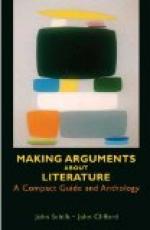It has been pointed out[36] that the two methods are really statements of what is required for the verification of a theory at two stages of its growth: when we are first getting a glimpse of a causal connection between two facts we collect all the cases in which they occur in as much variety as possible, to see if the connection is really universal; then, having established the universal sequence, we come to close quarters with it in a single critical instance, varying the conditions singly until we run down the one without which the effect cannot take place.
No neater and more illuminating example of this relation between the two methods and the successful working of them can be found than that in the article by General Steinberg, “Yellow Fever and Mosquitoes” (p. 251). In that case first Dr. Carlos Finlay of Havana, and then Dr. Sternberg himself, had become convinced by comparing many cases of yellow fever that there was some intermediate host for the bacillus that caused the disease. This conclusion they reached through the method of agreement. Dr. Finlay’s experiments by the method of difference had failed, however, indisputably to establish the cause, since he did not see that it was necessary to allow the bacillus at least twelve days for incubation in the body of the mosquito. The final and definitive proof, which came through the splendid self-devotion of the surgeons in charge of the experiment and of certain enlisted men who volunteered to be made the subject of the experiment, was by the method of difference. These brave men allowed themselves to be exposed to mosquitoes which had already bitten patients suffering from the fever, and they promptly came down with the disease; one of them, Dr. Lazear, gave his life for his devotion to the cause of his fellow men. Then other men were exposed in a mosquito-proof room to clothes and other articles brought directly from yellow-fever patients, and showed no ill effects. Thus it was absolutely proved, though the bacillus itself had not been found, that yellow fever is carried by mosquitoes, and is not carried by ordinary contagion.
The unsuccessful experiments of Dr. Finlay and the later success of Major Reed show how science advances by refinement of analysis in the use of the method. The hypothesis on which the former worked was that all mosquitoes who had bitten a yellow-fever patient can carry the disease. Dr. Reed and his associates analyzed the phenomenon more closely and tried their experiments on the hypothesis that only mosquitoes who have lived twelve days after biting the patient are capable of passing on the disease. This refinement of analysis and observation is the chief mode of advance in the sciences which depend on experiment.




